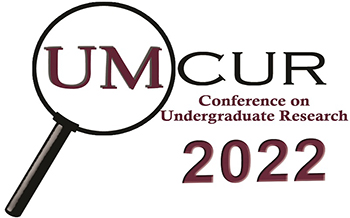Biomimetic and Passive Strategies to Improve Classroom Acoustics
Presentation Type
Presentation
Faculty Mentor’s Full Name
Hayley Blackburn
Faculty Mentor’s Department
Pharmacy Practice
Abstract / Artist's Statement
Education was declared a universal human right by the U.N. over 70 years ago, but its global implementation has faced many challenges that limit the universal accessibility of education. Educational accessibility increases the physical and socioeconomic availability of learning to as many people as possible. A crucial component of accessibility is the ease at which teachers and learners can hear and communicate. Unfortunately, classroom acoustics have often been overlooked as a crucial component of educational accessibility. This project aims to identify common classroom acoustic issues and translate them into a rubric to assess acoustic conditions, understand the significance of acoustic features, and evaluate potential solutions to these acoustic issues.
To develop this toolkit, we conducted research on international building standards and surveyed educators and students with international experience to understand challenges with acoustic quality in a variety of learning environments. We consulted acoustic engineers, architects, and construction experts to compile technical information into simple language for this rubric, as well as ensure our evaluation of the codes and room features were in line with their expertise. Additionally, we researched biomimicry-based solutions, by interviewing experts and available solutions, alongside other solutions to make classroom acoustics more efficient, sustainable, and available to all. Through this we hope to ensure that our proposed solutions are realistic for the wide variety of international learning environments.
The culmination of this research will be a toolkit with information regarding global acoustic standards, and the lack thereof, including information collected from surveys on common acoustic issues faced in classrooms globally. Finally, it will contain a simple rubric that can be used to evaluate the acoustic quality of most types of classrooms paired with a variety of acoustic solutions based on biomimetic principles that can address these issues.
Category
Franke Global Leadership Initiative
Biomimetic and Passive Strategies to Improve Classroom Acoustics
UC 220
Education was declared a universal human right by the U.N. over 70 years ago, but its global implementation has faced many challenges that limit the universal accessibility of education. Educational accessibility increases the physical and socioeconomic availability of learning to as many people as possible. A crucial component of accessibility is the ease at which teachers and learners can hear and communicate. Unfortunately, classroom acoustics have often been overlooked as a crucial component of educational accessibility. This project aims to identify common classroom acoustic issues and translate them into a rubric to assess acoustic conditions, understand the significance of acoustic features, and evaluate potential solutions to these acoustic issues.
To develop this toolkit, we conducted research on international building standards and surveyed educators and students with international experience to understand challenges with acoustic quality in a variety of learning environments. We consulted acoustic engineers, architects, and construction experts to compile technical information into simple language for this rubric, as well as ensure our evaluation of the codes and room features were in line with their expertise. Additionally, we researched biomimicry-based solutions, by interviewing experts and available solutions, alongside other solutions to make classroom acoustics more efficient, sustainable, and available to all. Through this we hope to ensure that our proposed solutions are realistic for the wide variety of international learning environments.
The culmination of this research will be a toolkit with information regarding global acoustic standards, and the lack thereof, including information collected from surveys on common acoustic issues faced in classrooms globally. Finally, it will contain a simple rubric that can be used to evaluate the acoustic quality of most types of classrooms paired with a variety of acoustic solutions based on biomimetic principles that can address these issues.
